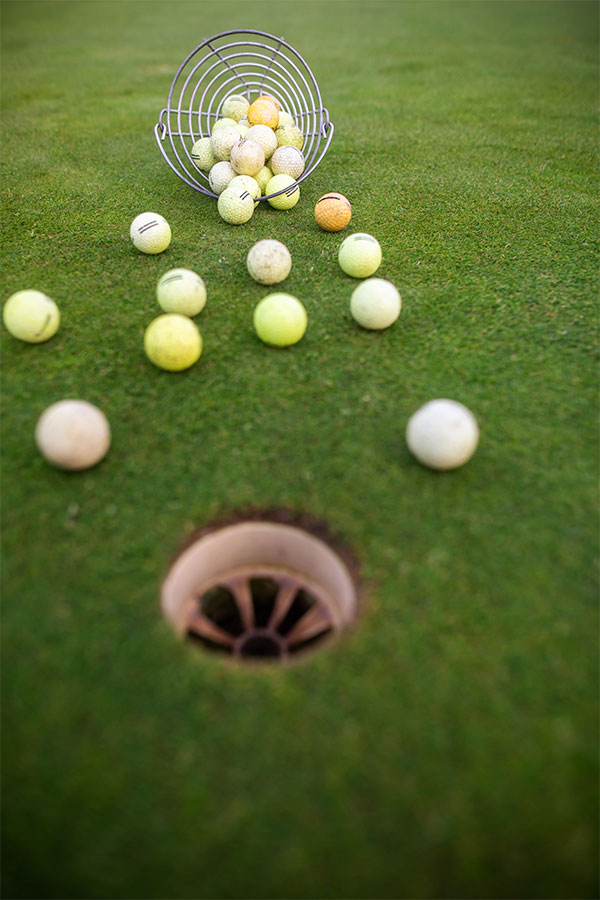The Golf Ball/Distance Debate Reaches a Zenith
Weighing the pros and cons of the proposed equipment changes

by Tony Dear
It was two weeks ago that Seth Waugh, CEO of the PGA of America which runs the PGA Championship, announced his organization, as well as the PGAs of Great Britain, Australia and a number of other countries, would not be supporting the proposed Model Local Rule (MLR) that would allow competition organizers to stipulate use of a reduced-distance ball.
Masters Chairman Fred Ridley, Tiger Woods, Rory McIlroy, numerous other great players from the past, and plenty of significant voices in the press had welcomed the governing bodies’ announcement, however, so Waugh’s decision (and that of PGA Tour commissioner Jay Monahan) came as something of a blow to those wanting to see distance gains slowed, stopped altogether, or even dialed back.
The wording of Waugh’s rejection message was cordial, though the content plunged the distance debate into even deeper, darker waters. Waugh claimed that enacting the proposed changes might “seriously interrupt the current momentum in the game” – a fair talking point that deserves scrutiny, though I seriously doubt a rollback would have much effect at all.
Large numbers of otherwise housebound people took up the game during the pandemic when golf was one of the few recreational activities they could pursue safely. It’s unlikely they’ll drop it because Rory McIlroy, Scottie Sheffler, Jon Rahm, etc. have to start playing a competition ball in two and a half years’ time. What’s not in doubt, though, at least not to a significant number of observers, is that professional golf on TV is becoming increasingly dull.
It’s fun watching the best players hit the ball far…for a while. Speed and distance are mesmerizing…until they aren’t. When every player is hitting it a mile and leaving short irons or wedges into every single Par 4 or reaching Par 5s with a drive and mid-iron (sometimes less), the game loses something. Players rarely need to ‘conjure something up’. Nor are they required to master every club in the bag. It’s no longer exceptional to hear a shocked announcer cooing at how far XYZ hits the ball, and hasn’t been for years.
When the game’s rule-makers presented their plan six months ago, Martin Slumbers, CEO of the R&A, said the MLR would “protect the inherent qualities of the sport and reduce the pressure to lengthen courses”. Mike Whan, Slumbers’s counterpart at the USGA, said hitting distances at the elite level of the game had consistently increased over the past 20, 40, 60…years, and that “predictable, continued increases” would become a “significant issue for the next generation if not addressed soon”.
The PGA of America and PGA Tour’s willingness to distance themselves from the ruling bodies is largely unprecedented and effectively forms an entertainment-only island to which many will be drawn by the prospect of longer and longer drives, but which many are equally as likely to avoid. The Pro organizations are essentially saying they are happy to do business as golf entities without adhering to all the game’s official rules, a move that would surely alienate them from golfers who regard the history of the game and its rules as sacred. Yes, the MLR would be a local rule, but by disregarding or ignoring it aren’t the PGA of America and PGA Tour playing a dangerous game?
The USGA and R&A certainly don’t always get it right, but their top priority is genuinely to safeguard the game of golf. The PGA Tour and various Professional Golfers’ Associations around the world, meanwhile, exist to benefit the 50,000 or so people globally who play or teach the game for financial gain. Their priority isn’t so much towards golf itself but those who work in the golf industry.
The first part of solving a problem is recognizing there is one. For many, no such problem exists – with millions watching, the game being played to higher and higher standards, and top pros earning huge sums of prize money, the pro game has never been healthier they say. I think pro golf is actually experiencing death by a thousand cuts – ‘death’ might be a little strong, at least serious injury.
Shortening elite golfers’ drives by 40-45 yards would very likely have a number of positive consequences – they’d use a greater variety of clubs and need to hit a greater variety of shots – not just the high, soft-landing approach – something the best in the world should surely be able to do; great courses would remain challenging and not be lost to spectators and TV viewers because they could be overpowered; tournament courses wouldn’t need to grow so much long, thick rough which makes exciting recovery shots less likely; rounds wouldn’t take so long; and with less pressure on courses to extend their yardage the game might even become slightly less expensive in time.
The 2026 MLR ball is intended only for elite competition, so would have no effect on the recreational game you and I play. That’s the sensible way to go, although dissenters say the resulting bifurcation (one set of rules for them, another for us) would be undesirable as amateurs being able to use the same equipment as professionals and play by the same rules (Waugh – “We all play on the same course with the same club and balls”) is perceived as one of the many reasons people play the game. Hmm, I’m not convinced. How many people do you know that started playing golf because they could play by exactly the same rules as Jack Nicklaus or Tiger Woods?
It’s estimated an MLR ball might mean a loss of five yards or less for a male golfer with the average driver swing speed of 93-95mph. If that’s true, what if the USGA/R&A were to scrap the MLR completely, and announce a universal rollback? Golfers have dealt with similar changes before, most recently in 1990 when the R&A finally outlawed the ball measuring 1.62” in diameter in favor of the 1.68” ball that had been used in the US since the early 1930s. For golfers outside USGA-governed countries it meant a significant loss of distance and wasn’t terribly popular at first. The brouhaha quickly subsided, however, and I daresay it would this time too.
If the game is to remain the thrilling, often fickle, adventure that lured us in the first place, we shouldn’t want it to become fair or easy (that’s not happening for us any time soon, of course).
I’m not advocating for anything drastic, though other sports have gone this far and farther. Major League Baseball mandates the use of wooden bats and reduced the weight of baseballs by 2.8 grams in 2021 to keep balls within stadiums. Certain new-tech swimsuits have been banned from the Olympics to keep existing world records credible. Tennis balls became a little slower in 2019 prolonging rallies which makes it more enjoyable to watch.
These all seem like reasonable, logical measures to keep those sports watchable and sustainable. Perhaps something similar for elite golf would make sense. I think it’s time.
The views expressed here are those of equipment writer Tony Dear and do not necessarily reflect those of Colorado AvidGolfer Magazine.
Colorado AvidGolfer Magazine is the state’s leading resource for golf and the lifestyle that surrounds it, publishing eight issues annually and proudly delivering daily content via coloradoavidgolfer.com.
Local qualifier for U.S. Women’s Open sees crowded field
High school and college players vie with veterans for crucial spots in Women’s U.S. Open
Prime Time for Snell Golf
Snell Golf is back after a troubling 2023 with three new balls that should restore the company’s reputation
Ford & Hyundai Rise to Tesla’s Challenge
Ford’s Mach E Type S can go mid-200s at spirited speeds and the Hyundai Ioniq6 is a blast to drive with direct steering


